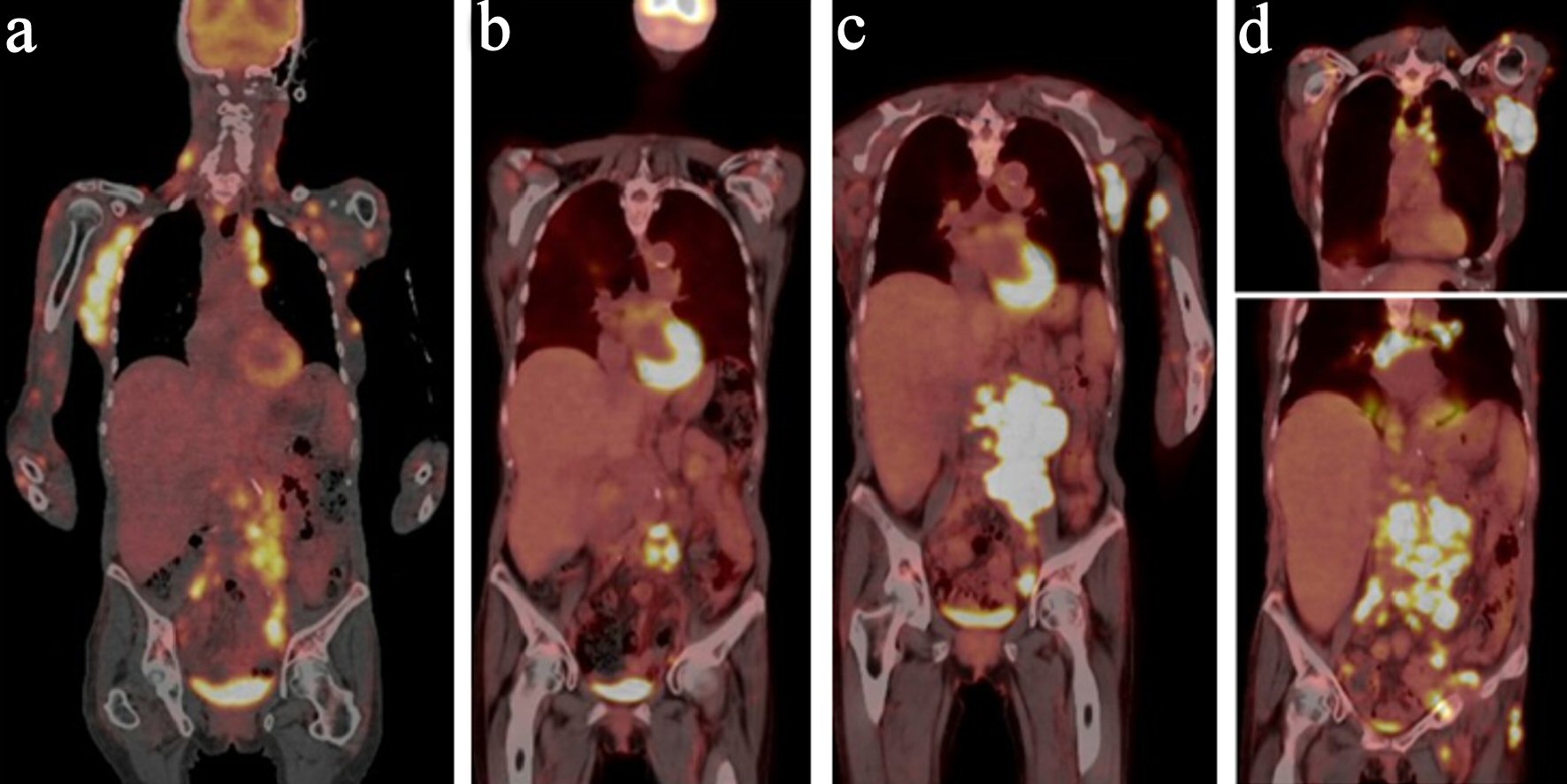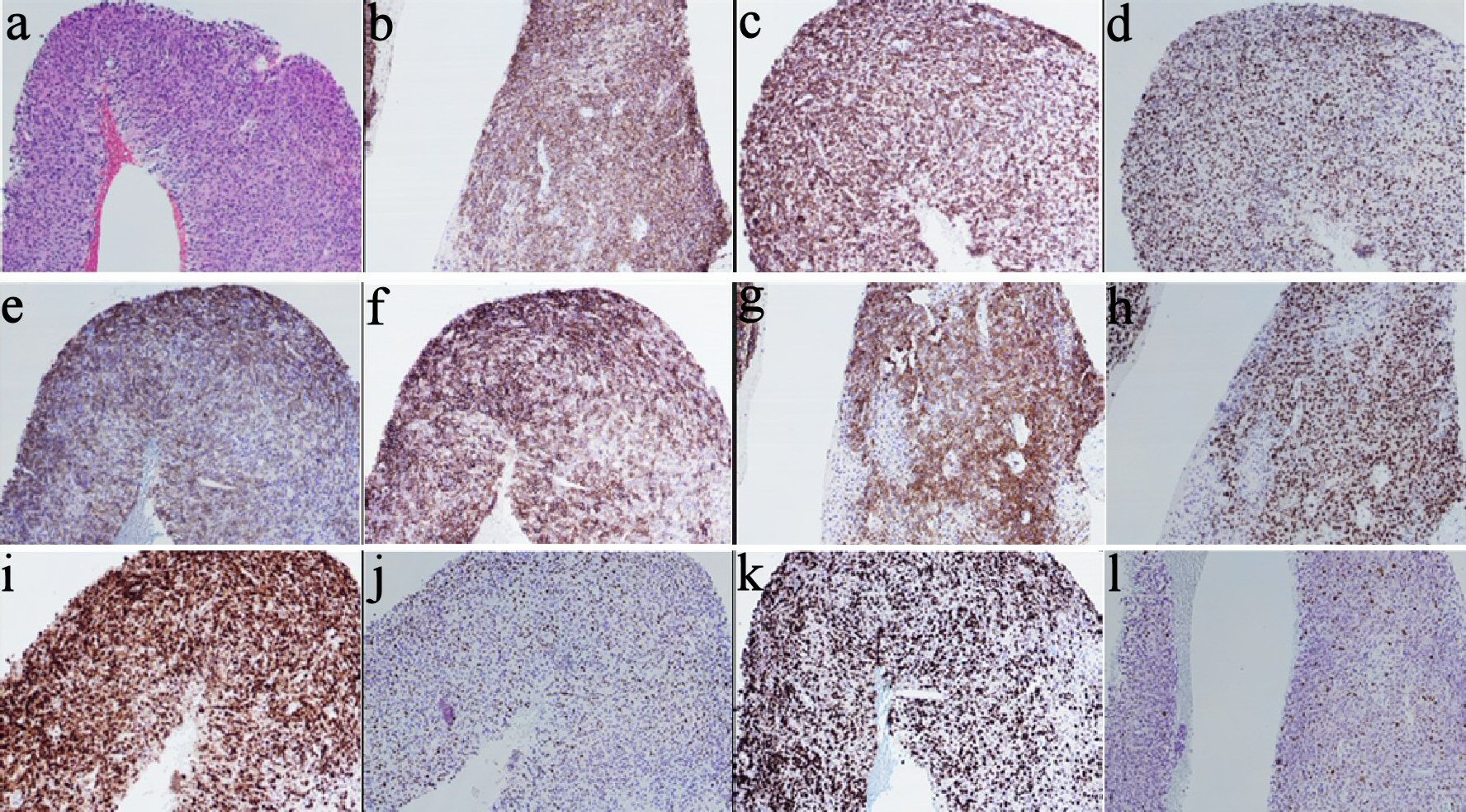
Figure 1. PET-CT panel with initial PET-CT, PET-CT with progression in February, 2019, PET-CT in May, 2019 and PET in July, 2019. (a) PET-CT at initial diagnosis. (b) PET-CT after brentuximab. (c) PET-CT with progression on brentuximab. (d) PET-CT with progression on mogamulizumab. PET-CT: positron emission tomography-computed tomography.

Figure 2. Pathology images/panel with EBV+ DLBCL. (a) H&E stain showing large lymphoma cells infiltrating the tissue in sheets (× 10). (b) CD20 IHC (× 10). (c) BCL2 IHC (× 10). (d) BCL6 IHC (× 10). (e) CD21 IHC (× 10). (f) CD23 IHC (× 10). (g) CD30 IHC (× 10). (h) OCT2 IHC (× 10). (i) MUM1 IHC (× 10). (j) Twenty to thirty percent of cells positive for MYC IHC (× 10). (k) High proliferation index (80-90%) by Ki-67 IHC (× 10). (l) Patchy positive EBER-ISH (× 10). EBV: Epstein-Barr virus; DLBCL: diffuse large B-cell lymphoma; H&E: hematoxylin and eosin stain; IHC: immunohistochemistry; ISH: in situ hybridization; CD: cluster of differentiation.

